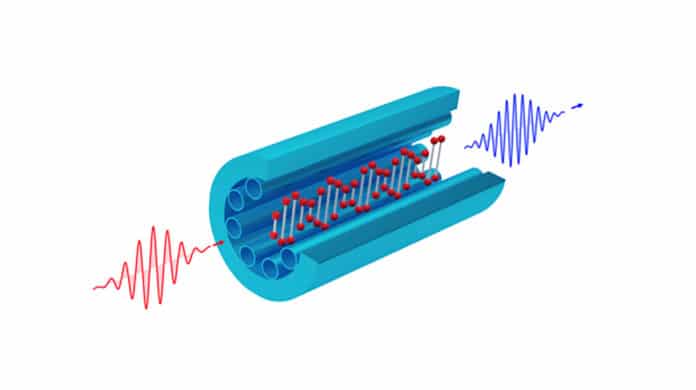Preserving photon statistics of quantum optical states during frequency conversion is critical in modern quantum technologies, as quantum networks sometimes demand the interfacing of many subsystems operating in significantly different spectral regions. However, current approaches offer only very small frequency shifts and limited tunability. They also suffer from high insertion loss and Raman noise originating in the materials used.
In a new study, scientists reported a breakthrough in frequency up-conversion of single photons based on a hollow-core photonic crystal fiber (PCF) filled with hydrogen gas. Scientists created a spatio-temporal hologram of molecular vibrations in the gas by stimulating Raman scattering. They then used this hologram for highly efficient, correlation-preserving frequency conversion of single photons.
The system operates at a pressure-tunable wavelength, which could be helpful in quantum communications where efficient sources of indistinguishable single-photons are unavailable at wavelengths compatible with existing fiber networks.
The approach combines quantum optics, gas-based nonlinear optics, hollow-core PCF, and the physics of molecular vibrations to form an efficient tool that can operate in any spectral band from the ultraviolet to the mid-infrared – an ultra-broad working range inaccessible to the existing technologies. The findings may be used to develop fiber-based tools in quantum communications and quantum-enhanced imaging technologies.
Journal Reference:
- R. Tyumenev. Tunable and state-preserving frequency conversion of single photons in hydrogen. DOI: 10.1126/science.abn1434
